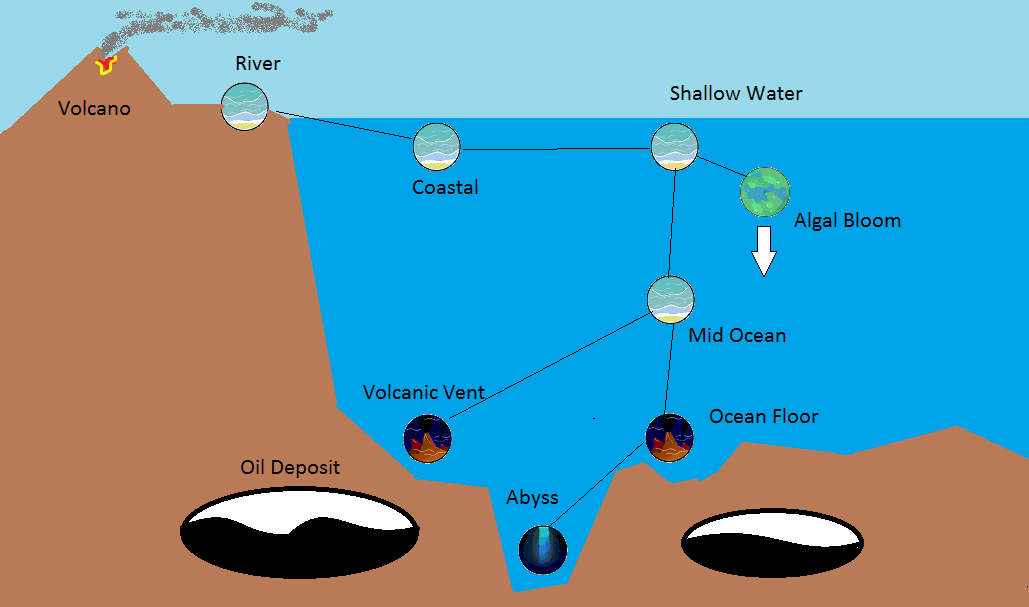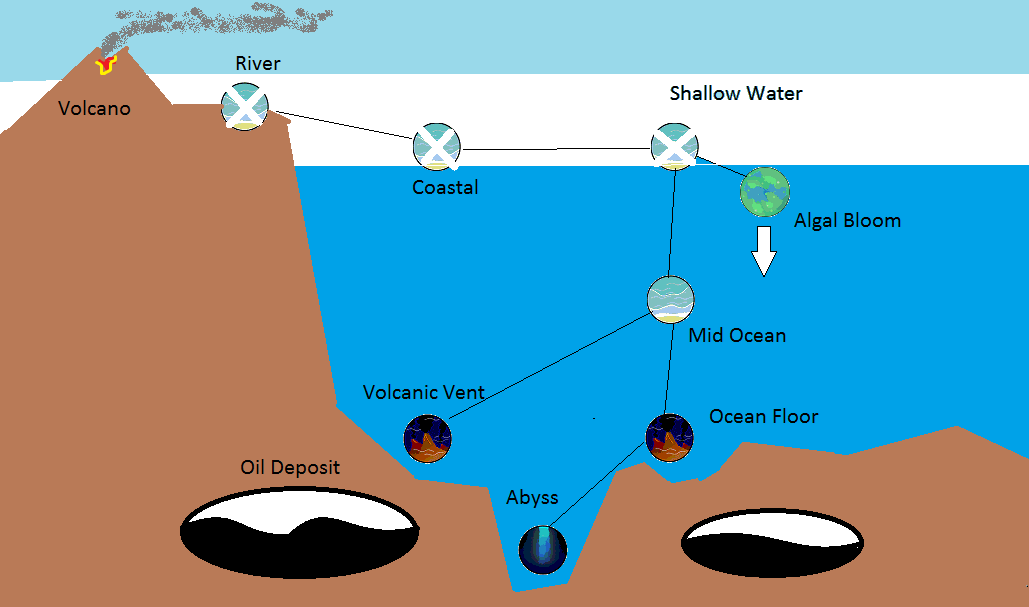I think this is probably a good thread to put this next mspaint based idea in, thought it is certainly necroposting.
Basically here are two problems we have.
-
What about timescales? In a billion year microbe stage the climate will change a lot slower than the lifetime of a bacteria. Really we would want 1,000,000 generations of your cell to cover the 10,000 year period between ice ages. This is obviously a bit much to ask the player to do.
-
Plate tectonics and designing planets. It’s a lot of work to simulate a planet and does the microbe stage really need it?
So here is a suggestion of how to solve both these problems, by basically completely throwing out time and space and gamifying everything. The cons of this are that it’s less realistic but the main pro is that it will feel right as a game, and that is huge.
Here’s a picture showing what I mean.
Each patch has an icon on a 2d map. Importantly there’s only 1 of each biome. Moreover the map is the same each time you play. The algal bloom happens occasionally and descends down through the ocean over time, mixing with the patches it passes as it goes.
Climate is controlled by the carbon cycle, the volcano on the left erupts and that changes the atmospheric gas composition which changes the temperature of the planet and the wavelengths of light getting through the atmosphere (I’ve already written a prototype capable of doing these calculations). The speed of climate change is based on “turns” (a turn is each time the player goes to the editor). So it will feel right, like if things start freezing over you will get 2-3 chances to adapt yourself to the change as it happens.
The concentrations of compounds in the ocean and atmosphere are controlled similarly, if the chemical concentration of the ocean is changing you will get some chances to adapt to these changes. (Unless maybe you are on a super hard mode). This is unrealistic (as the climate does not change in 2-3 bacterial generations) however it preserves the “spirit” of the stage. Meaning the climate changes and the player adapts to it and feels tension when there is a race.
For example if the planet gets too cold it can freeze over as in this next diagram.
and so you need to flee to the ocean vent to keep your species alive (as all the photosynthesizers will die and so will all life that relies on them. You are not allowed in the top patches at this time). When the ocean warms up you can spread out again.
Likewise if the planet gets too hot the ocean starts to boil off and the top patches become inaccessible.
The oil I thought was a cute feature that it could build up over time and you could come back to it later in the industrial, the quantity available could depend on how long you stuck around in the microbe stage for. Though be careful, too much oil might lead to climate disaster when you use it later!
Anyway what do you think? It is very gamey. It’s relatively easy to implement (the map is the same every time and the climate changes are slaved to the players actions / turns), it’s especially easy compared to procedural plate tectonics. It captures the spirit of the systems we are interested in. The CPA system would sit inside the patches and determine fitness / make alterations to the species and can be bolted on when we are happy with it.
Is it too limited or too boring? Is it too unrealistic? If you want many more patches can you say why? What is the advantage of a bigger map? If you want more accurate timescales can you explain how that will work and how they will be meshed together?
I think this will feel very gamelike and approachable, which I like, but will still have a lot of really interesting systems in the background (CPA, light and matter interaction, planetary climate calculation, carbon cycle etc). Anyway I’m not wedded to it or anything, just wanted to suggest it.

